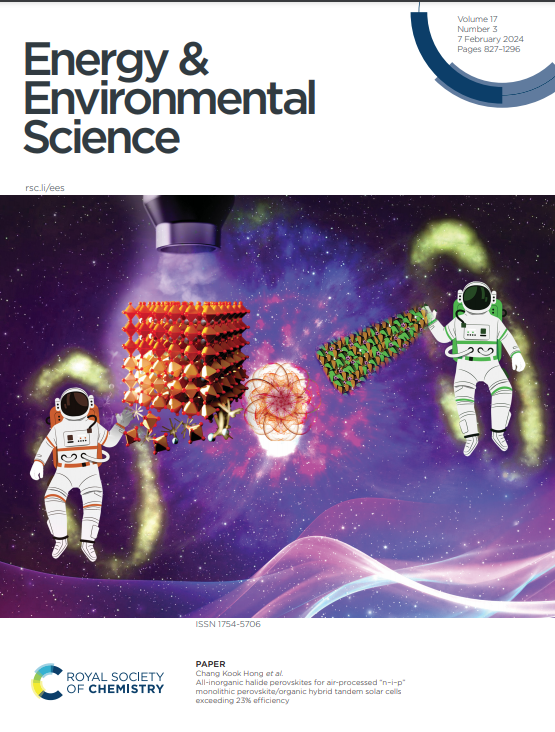Mesoscale polymer regulation for fast-charging solid-state lithium metal batteries
IF 32.4
1区 材料科学
Q1 CHEMISTRY, MULTIDISCIPLINARY
引用次数: 0
Abstract
Developing solid-state polymer electrolytes with both high voltage and ionic conductivity is essential for practical solid-state batteries. Poly(vinylidene fluoride) (PVDF)-based solid-state electrolytes are attractive for solid-state lithium metal batteries (LMBs). However, their high mesoscale heterogeneity induced by phase separation during electrolyte preparation leads to the formation of large PVDF spherulites. Herein, we demonstrate that the mesoscale heterogeneity causes the accumulation of Li+ on the surfaces of oversized PVDF spherulites. The large spherulites with low interface-bulk ratios greatly impede the efficient long-range Li+ conduction within the electrolyte. We propose an efficient strategy to regulate the geometric structure of PVDF spherulites by introducing the polyvinyl alcohol (PVA) coated dielectric SrTiO3 (PVA@STO) as a nucleating agent in a PVDF-based electrolyte. The excellent interfacial compatibility of the PVA coating layer with PVDF facilitates the uniform dispersion of PVA@STO nano-fillers and regulates the nucleation to form abundant finer PVDF spherulites with more interfaces, thereby providing abundant Li+ transport pathways. Furthermore, the well-dispersed PVA@STO nano-fillers can effectively dissociate lithium salt to generate more mobile Li+ in the PVDF–PVA@STO electrolyte that exhibits a high ionic conductivity of 8.6 × 10−4 S cm−1. The Li|PVDF–PVA@STO|NCM811 batteries demonstrate excellent high rate cycling performance, retaining 80.8% and 70.5% capacity after 2000 cycles at 5C and 10C, respectively. This work clearly demonstrates the significant effect of mesoscale structure regulation on a polymer structure for high-performance fast-charging solid-state lithium metal batteries.

求助全文
约1分钟内获得全文
求助全文
来源期刊

Energy & Environmental Science
化学-工程:化工
CiteScore
50.50
自引率
2.20%
发文量
349
审稿时长
2.2 months
期刊介绍:
Energy & Environmental Science, a peer-reviewed scientific journal, publishes original research and review articles covering interdisciplinary topics in the (bio)chemical and (bio)physical sciences, as well as chemical engineering disciplines. Published monthly by the Royal Society of Chemistry (RSC), a not-for-profit publisher, Energy & Environmental Science is recognized as a leading journal. It boasts an impressive impact factor of 8.500 as of 2009, ranking 8th among 140 journals in the category "Chemistry, Multidisciplinary," second among 71 journals in "Energy & Fuels," second among 128 journals in "Engineering, Chemical," and first among 181 scientific journals in "Environmental Sciences."
Energy & Environmental Science publishes various types of articles, including Research Papers (original scientific work), Review Articles, Perspectives, and Minireviews (feature review-type articles of broad interest), Communications (original scientific work of an urgent nature), Opinions (personal, often speculative viewpoints or hypotheses on current topics), and Analysis Articles (in-depth examination of energy-related issues).
 求助内容:
求助内容: 应助结果提醒方式:
应助结果提醒方式:


